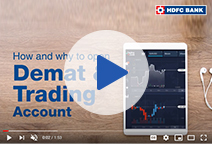You've Been Logged Out
For security reasons, we have logged you out of HDFC Bank NetBanking. We do this when you refresh/move back on the browser on any NetBanking page.
OK- Home
- PAY Cards, Bill Pay
- Money Transfer
- To Other Account
- To Own Account
- UPI (Instant Mobile Money Transfer)
- IMPS (Immediate Payment 24 * 7)
- RTGS (Available 24 * 7)
- NEFT (Available 24 * 7)
- RemitNow Foreign Outward Remittance
- Remittance (International Money Transfers )
- Religious Offering's & Donation
- RemitNow (For Expat)
- Forex Services for students
- Pay your overseas education fees with Flywire
- ESOP Remittances
- Visa CardPay
- Cards
- Bill Payments
- Recharge
- Payment Solutions
- Money Transfer
- SAVE Accounts, Deposits
- INVEST Bonds, Mutual Funds
- BORROW Loans, EMI
- INSURE Cover, Protect
- OFFERS Offers, Discounts
- My Mailbox
- My Profile
- Home
- PAY Cards, Bill Pay
- Money Transfer
- To Other Account
- To Own Account
- UPI (Instant Mobile Money Transfer)
- IMPS (Immediate Payment 24 * 7)
- RTGS (Available 24 * 7)
- NEFT (Available 24 * 7)
- RemitNow Foreign Outward Remittance
- Remittance (International Money Transfers )
- Religious Offering's & Donation
- RemitNow (For Expat)
- Forex Services for students
- Pay your overseas education fees with Flywire
- ESOP Remittances
- Visa CardPay
- Cards
- Bill Payments
- Recharge
- Payment Solutions
- Money Transfer
- SAVE Accounts, Deposits
- INVEST Bonds, Mutual Funds
- BORROW Loans, EMI
- INSURE Cover, Protect
- OFFERS Offers, Discounts
- My Mailbox
- My Profile
- Home
- PAY Cards, Bill Pay

- Money Transfer
- To Other Account
- To Own Account
- UPI (Instant Mobile Money Transfer)
- IMPS (Immediate Payment 24 * 7)
- RTGS (Available 24 * 7)
- NEFT (Available 24 * 7)
- RemitNow Foreign Outward Remittance
- Remittance (International Money Transfers )
- Religious Offering's & Donation
- RemitNow (For Expat)
- Forex Services for students
- Pay your overseas education fees with Flywire
- ESOP Remittances
- Visa CardPay
- SAVE Accounts, Deposits
- INVEST Bonds, Mutual Funds
- BORROW Loans, EMI
- INSURE Cover, Protect
- OFFERS Offers, Discounts
- My Mailbox
- My Profile
- Personal
- Resources
- Learning Centre
- ThisPageDoesNotCntainIconInvest
- How To Know Your Demat Account Number
How To Know Your Demat Account Number
11 March, 2025
Synopsis
- A Demat Account is essential for storing securities.
- It is a 16-digit unique account number.
- This number, issued by your Depository Participant (NSDL/CDSL), includes a DP ID and a client ID.
A Demat Account number is a unique 16-digit identifier that is assigned to each Account holder while opening a Demat and Trading Account with a stockbroker. This number varies on the basis of the Depository Participant – either NSDL or CSDL. This number allows you to trade in different financial markets. A Demat Account is essential if you want to trade securities. With this account, you can invest in equities, currency, derivatives, commodities, and mutual funds.
What is a Depository Participant?
Depository Participants (DP) are the agent of a depository such as:
- National Securities Depository Limited (NSDL)
- Central Depository Services Limited (CDSL)
DP has the license to operate in the market. A depository issues this license under the provisions of The Depositories Act, 1996. They have a unique DP ID assigned to them by CDSL or NSDL. When new investors enter the stock market, they need to approach a depository participant to open a Demat account. Shares purchased by the investor are held in this account along with the depository participant. However, the investor remains the sole beneficial owner of the shares. The DP credits or debits finances whenever there is any buying or selling activity through this account.
How to Know Your Demat Account Number?
Depending on your DP, you will receive the letter from the NSDL or the CDSL. The letter you receive will have a 16-digit Demat Account number. If you receive the letter from CDSL, the Account number is also known as the Beneficiary Owner ID (BO ID). The format of the number will vary from one Depository firm to the other. If you receive the letter, the NDSL, the alphabet ‘IN’ will come before the 14-digit number, such as IN47368696536797. In the case of CDSL, it will just be in a number format, such as 1284653414677645. In either case, the first eight digits of your Demat Account number will represent the DP ID. The latter eight digits represent the client ID. The client ID or the customer ID is unique to every trader.
Why is the Demat Account Number Significant?
The Demat Account number is a part of every transaction in the secondary market of India. The primary task of a Demat Account number is to remove the need of holding share certificates or other securities in a physical form. It substantially reduces the risk of theft and loss of securities. It also enables fast transfer of shares and securities between individuals.
How to Open a Demat Account?
You first need to choose a Securities and Exchange Board of India (SEBI) registered Depository Participant. After that, follow the steps given below.
- Fill up the application form necessary for opening a Demat Account.
- Submit the required documents such as Aadhar card, PAN card and your residential proof.
- After submitting the documents, the brokerage firm will contact you for verification.
- Once the verification is done, you can access your Demat Account.
To learn more about Demat Account charges or apply for a Demat Account at HDFC Bank, click here.
*Disclaimer: Terms and conditions apply. This is an information communication from HDFC Bank and should not be considered as a suggestion for investment.Investments in securities market are subject to market risks, read all the related documents carefully before investing.
